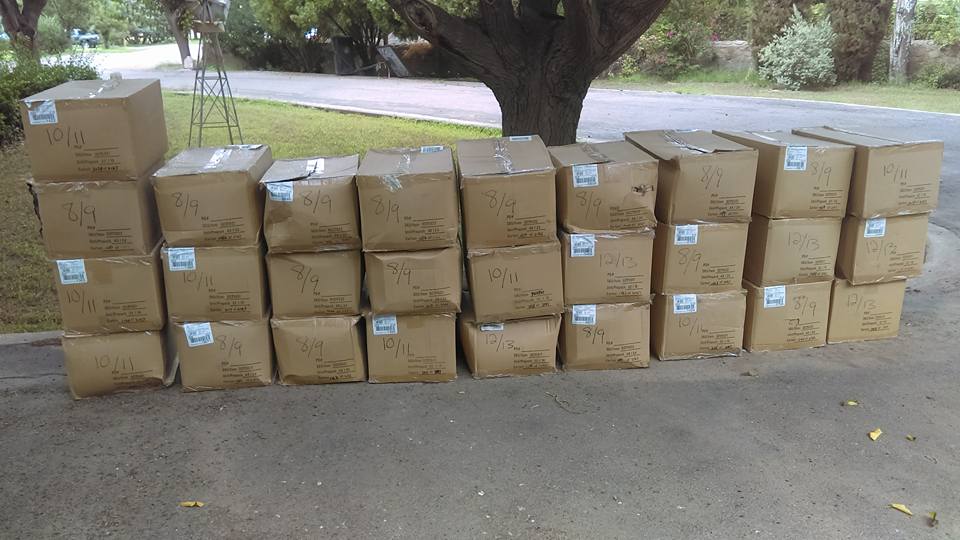
Who do we help
The agency strives to serve military veterans and their families located in El Paso, Texas. The city of El Paso has over 95% of the veterans’ population within the county. These veterans are made up of mostly male versus female, between the ages of 20—60 years old. The target population within this demographic is to serve mentally-ill veterans, especially those struggling with mental health instability.
100% of the veterans served are displaced from their military roles because they are medically retired, medically discharged, or retired. The organizational goal is to support the veteran and their spouse, children, and/or caregivers, during the transition phase from active duty to civilian-life. The population is largely underserved, as the Army is the only branch of service with a transition program.
Problem Needs Statement
Nearly 1 in 4 active duty members showed signs of a mental health condition (National Alliance on Mental Illness). These American heroes serving in the Armed Forces make continuous sacrifices even after they have honorably served their country. These brave men and women— especially those who have served in combat—deal with mental health issues related to injuries sustained during military service. Injuries include traumatic brain injury (TBI), post—traumatic stress disorder (PTSD), severe depression, panic disorder, anxiety, and explosive disorder. Mentally-ill veterans return home only to struggle with forced medical retirement, or medical discharge from active duty.
Surprisingly, even post-retirement veterans struggle with mental
health issues. After 20+ years of dedicated service, retirees leave the military feeling scared, alone, and lost. Some do not have the skills required to transition into the workforce, because their military experience does not transition into civilian work environments. Transitioning out of the military poses a heavy burden because veterans are not mentally prepared to convert to a civilian lifestyle. Alarmingly, discharged veterans pose a high risk within the population for suicide, prescription drug abuse, smoking, and alcoholism.
The rate of PTSD in veterans is 15 times higher than civilians. A large majority of Vietnam Veterans struggled with chronic PTSD symptoms, with four out of five reporting recent symptoms when interviewed 20—25 years after Vietnam. Vietnam Veterans also struggle with a number of psychological disorders other than PTSD. The most commonly reported disorders vary slightly between male and female Veterans. However, depression, anxiety, and alcohol problems are typically the most prevalent across groups (U.S. Department of Veteran’s Affairs). Traumatic events, such as military combat, assault, disasters, or sexual assault can have long-lasting negative effects such as trouble sleeping, anger, nightmares, being jumpy, and alcohol and drug abuse. When these troubles don’t go away, it could be PTSD. (JAMA Psychiatry, 2014).
Prescription Drug Abuse
29% of active duty Army suicides from fiscal year (FY) 2005 to FY 2009 involved alcohol or drug use, – and in 2009, prescription drugs were involved in almost one third of them (Army Suicide Prevention Task Force, 2010). The abuse of prescription drugs is higher among service members than among civilians and is on the increase. In 2008, 11 percent of service members reported misusing prescription drugs, up from 2 percent in 2002 and 4 percent in 2005. Most of
the prescription drugs misused by service members are opioid pain medications. Pain reliever prescriptions written by military physicians quadrupled between 2001 and 2009—to almost 3.8 million.
Combat—related injuries and the strains from carrying heavy equipment during multiple deployments likely play a role in this trend.” To clarify the problem even further, “Almost half of active duty service members (47 percent) reported binge drinking in 2008—-up from 35 percent in 1998 (National Institute on Drug Abuse NIDA). Veterans are suffering. Discharged veterans are not transitioning well into their civilian roles, – they are dealing with substantial hardships due to mental disorders and physical disabilities. Vital research finds suicidal inclination is high among displaced veterans.
Alcoholism
Alcohol use is also higher among men and women in military service than among civilians. Almost half of active duty service members (47 percent) reported binge drinking in 2008—up from 35 percent in 1998. In 2008, 20 percent of military personnel reported binge drinking every week in the past month, the rate was considerably higher—27 percent—among those with high combat exposure (National Institute on Drug Abuse).
Suicide
From 1999-2010, the suicide rate in the US population among males was 19.4 per 100,000, compared to 4.9 per 100,000 in females. Based on the most recent data available, in fiscal year 2009, the suicide rate among male Veteran VA users was 38.3 per 100,000, compared to 12.8 per 100,000 in females (U.S. Department of Veteran’s Affairs). Five mental disorders predict post-enlistment first suicide attempts in multivariate analysis: pre-enlistment panic disorder, pre-enlistment posttraumatic stress disorder, post-enlistment depression and both pre- and post-enlistment intermittent explosive disorder. The veteran’s age is directly correlated with escalated suicide rates, which means veterans discharged—retirement, medical retirement, medical discharge—from the military are at a high—risk for suicidal ideation, developing a suicide plan and attempting suicide (JAMA Psychiatry). The suicide rate of infantry men and combat engineers is most elevated during non-deployment; therefore, living at home is among the highest risk factor jeopardizing veterans. Efforts are needed to elucidate the causal mechanisms underlying this interaction to guide preventive interventions for soldiers at high
suicide risk (Psychological Medicine, 2015).
These studies help gain an understanding of suicide risk factors affecting veterans: mental health illnesses coupled with transitioning out of the military. These veterans are underserved and misrepresented due to mental health stigmas. An increase in knowledge helps to prevent and interrupt the problem. Other types of intervention from therapists, counselors, social workers, doctors and family involvement help the problem. Additionally, recreational activities, fitness training, nutritional guidance, leisure activities, and hobbies aid in distracting the mind. Education, awareness, and erasing stigma increases knowledge and assists in
prevention. Caregivers, employers, first responders, and family members should be trained and educated to help the veteran. The best time in the cycle to offer the greatest prevention is to help the veteran before, during, and after they go through transition—military to civilian lifestyle. Helping veterans who are within 12 months of separating from the military seems to be the best way to help. This help would include aiding them to compose a life plan before getting out of the military and meeting with them throughout that period. Threatened veterans include all ethnicities and genders, – however, veterans who experienced deployments areas of imminent danger are most at-risk. These combat veterans experience trauma after deployment. Furthermore, being a single parent is the highest risk-factor among females. Alas, career military members experiencing retirement are also at-risk. Overall, at-risk groups have a difficult time transitioning out of the military.
Proposed Project
The funds are kindly requested to continue a program called @111wa which is an all-inclusive 7-day therapeutic vacation for mentally-ill veterans. This is an effort to create preventative interventions to alleviate civilian transitions and thwart suicide among veterans. By redirecting the mindset away from suicide and substance abuse, educating the veteran and their family, and providing them with opportunities to spend quality time together in a therapeutic environment, the program seeks to aid in breaking mental illness stereotypes. The program also increases self-worth, diminishes substance abuse, depression, anxiety, panic attacks, explosive episodes, PTSD, and TBI symptoms through group/family therapy activities. This unique program provides veterans with a strong support system, by giving them an opportunity to establish new friendships in therapy and a healing environment for them and their families. PE is a Peer Mentorship Program to help and train veterans dealing with mental health issues, especially those struggling with substance abuse, suicidal inclination, and major life transitions.
Six different groups of twenty veterans will be selected to attend a vacation to either Corpus Christi, Galveston, San Antonio, Dallas, or Austin. The veterans will visit different areas of their home state, attend a Mental Health Conference, participate in two group therapy sessions with a clinical psychologist and enjoy the Texas history and sights.
Therapeutic activities include:
- Attending a mental health conference held over a 2—day period.
- Participating in recreational outings such as; hunting. fishing. and walking the beach.
- Enjoying entertainment outings such as; sporting events. sightseeing. and group lunches/dinners
- Assessing mental health screenings through questionnaires and group therapy.
- Establishing new friendships with other veterans struggling with similar mental health issues.
- Annotating changes in behavior in personal journals to build self—awareness.






